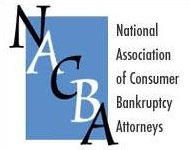
When bankruptcy law and family law intersect, the result can be liberating or disruptive, depending on the timing of a bankruptcy filing and the goals of the parties.
An infinite number of combinations lead to infinite different outcomes.
The variables start with whether bankruptcy occurs before or after status is altered; before or after the division of the property; the choice of chapter; whether the case is joint or solo; whether claims of third party creditors are involved, and so on.
Rather than look at all the possible combinations of those variables, I propose to focus on the powers and provisions of the Bankruptcy Code that impact financial aspects of divorce.
Understand what those five statutory forces are, and you can better anticipate, utilize, or avoid their impact. This discussion focuses on California law where exemptions and community property is involved.
Some bankruptcy basics
First, a bird’s eye view of the territory.
Without delving too deeply, here are some bankruptcy basics:
• Spouses can, but don’t need to, file bankruptcy together.
• Only spouses can file a joint case.
• One can file a bankruptcy case even if not eligible for a discharge in that case.
• With three exceptions, bankruptcy impacts the assets owned and the creditors existing at filing.
• The administration of a bankruptcy estate may extend long beyond the entry of the debtor’s discharge.
• The right to file bankruptcy cannot be barred by contract or court order.
Bankruptcy powers that matter in family law
Five characteristics of bankruptcy law explain most of what happens when bankruptcy and divorce collide.
I. The Supremacy Clause
The essential disruption emanates from the Supremacy Clause.
This Constitution, and the Laws of the United States which shall be made in Pursuance thereof; and all Treaties made, or which shall be made, under the Authority of the United States, shall be the supreme Law of the Land; and the Judges in every State shall be bound thereby, any Thing [sic] in the Constitution or Laws of any State to the Contrary notwithstanding.
Bankruptcy law is found in Title 11 of the US Code. In general, bankruptcy starts with the debtor’s property rights as determined by state law. By reason of the Supremacy Clause, federal law determines how those state law rights are impacted or altered by a bankruptcy filing.
One of the possible alterations is the bankruptcy court’s ability to relabel financial obligations. A debt characterized as property division may be found to be, in fact, support under bankruptcy law. Shaver v. Shaver, 736 F.2d 1314, 1316 (9th Cir. 1984). “The court must look beyond the language of the decree to the intent of the parties and to the substance of the obligation.”
Using that power to recharacterize obligations, bankruptcy courts have found each of the following to be ” in the nature of support”:
● Non filer’s attorney fees: Trentadue, 527 B.R. 328 (Bankr. E.D. Wis. 2015)
● Child’s guardian ad litem: Chang, 163 F.3d 1138 (9th Cir. 1998)
● Mortgage payments for the ex’s residence: Maitlen, 658 F.2d 466 (7th Cir. 1981)
● Debts of the ex: Williams, 703 F.2d 1055 (8th Cir. 1983)
● Education expenses of children, even beyond majority: Boyle, 724 F.2d 681 (8th Cir. 1984)
In the course of the divorce, tax considerations may drive the characterization of debts as support or division of property. Following the characterization used in the divorce in subsequent tax returns does not, apparently, enjoin a spouse from successfully arguing for a different characterization of the debt in bankruptcy. Kritt, 190 B.R. 382 (9th Cir. BAP 1995).
So, the label used in a divorce settlement may not control if one party ends up in bankruptcy.
II. Property of the estate
The second statutory force that impacts planning for divorce is the sweep of “property of the estate”. An “estate” is created when a bankruptcy case is filed; Section 541 defines what assets and legal rights become property of the bankruptcy estate.
Bankruptcy defines “property” expansively as “all legal or equitable interests of the debtor in property as of the commencement of the case”. §541(a)(1). The statute goes on to add to the estate all property that the trustee recovers by use of avoiding powers and the profits from any assets that are property of the estate.
Whereas in a dissolution, a spouse is entitled to half of the community, in bankruptcy, all of the community property becomes property of the estate, even when only one spouse files bankruptcy.
All interests of the debtor and the debtor’s spouse in community property as of the commencement of the case that is—
(A) under the sole, equal, or joint management and control of the debtor; or
(B) liable for an allowable claim against the debtor, or for both an allowable claim against the debtor and an allowable claim against the debtor’s spouse, to the extent that such interest is so liable. §541(a)(2).
Because all of the community is property of the bankruptcy estate, a creditor of either spouse whose claim can be paid under state law from community property can file a claim in the case. So, even the creditors of a non filing spouse can participate in the bankruptcy case of the non-liable spouse.
If the community property has not been divided, a bankruptcy filing by one spouse or ex spouse brings all of the community into the bankruptcy estate. A change in marital status doesn’t alter the liability of the undivided community for debts, and therefore for inclusion in the bankruptcy estate.
In Chapter 7, a liquidation proceeding, bankruptcy law puts the bankruptcy trustee in control of all of the community property and any separate property that belongs to the debtor. If the community includes an operating sole proprietorship, most trustees reflexively want to close the business, at least until the trustee understands the risks of continued operation.
Note that tax items such as net operating losses and capital gains exclusions on the sale of primary residences are property of the estate and available to the Chapter 7 trustee. 26 U.S.C. 1398(g).

In contrast to dissolution proceedings, the community property presumption of California Family Code 2581 with respect to the family home does not control in bankruptcy. Reed, 89 B.R. 100 (CD Cal. 1988); Rund v. R.F.F. Family P’ship, LP (In re Eberts), 2014 Bankr. LEXIS 119.
Bankruptcy cases for decades have held that when a spouse files alone owning a family home in joint tenancy, only the debtor’s one half interest becomes property of the bankruptcy estate. That treatment was rejected in Brace, decided by the 9th Circuit Bankruptcy Appellate Panel in January, 2017.
Brace held that the community property presumption for property acquired during marriage trumped the presumption arising from the form of title. The case is currently on appeal to the 9th Circuit.
Whether the co owner is a spouse or unrelated, a bankruptcy trustee has the power to sell jointly owned property. § 363(h). A non debtor owner shares the transaction costs of the sale, but gets his share of the net proceeds (and any tax consequences that flow from the sale).
Earnings from post filing personal services are not property of the estate and belong to the debtor, free of claims of the trustee or creditors. Income traceable to work done pre petition, as in a sales commission on a deal pending at filing, is part of the bankruptcy estate.
Bankruptcy law excludes altogether from its ambit certain kinds of property held by the debtor, like pensions and 401(k)’s; spendthrift trusts; and property where the debtor has only bare legal title. § 541(b).
Two significant exceptions to the “bankruptcy estate as a snapshot as of filing” principle are found in §541(a)(5). Proceeds of life insurance or property acquired by bequest, devise, or inheritance within the six months after the commencement of a bankruptcy case are property of the estate.
➴ If bankruptcy is seen as a possibility, attention to the debtor as beneficiary or heir of others is warranted.
Note that acquisitions by the debtor via trust are not within the ambit of “bequest, devise, or inheritance”. Zimmerman v. Spencer, 306 B.R. 328 (CD Cal. 2004).
III. Exemptions
The debtor’s ability to remove property from the bankruptcy estate with the use of exemptions is the third statutory force that impacts spouses and ex spouses.

While (nearly) everything the debtor has comes into the estate, some part of those assets exit the estate by the operation of exemptions. §522. Exemptions define the quantum of value in assets that is safe from the trustee and the creditors.
California has opted out of the federal bankruptcy exemptions, providing instead two alternative exemption systems in the Code of Civil Procedure. The standard California exemptions found in CCP 704, with the substantial homestead exemption, are available; a separate scheme available only in bankruptcy is found in CCP 703. Debtors must choose one system or the other.
One federal bankruptcy exemption does apply to California filers, despite the state opt out: a whooping $1,000,000 plus exemption for IRA retirement accounts. § 522(n).
Exemptions are claimed in the debtor’s schedules and become final 30 days after the date conclusion of the first meeting of creditors.
Nothing about the operation of bankruptcy law operates to determine the division of exempt property between spouses. Allowed exemptions simply define what isn’t any longer property of the bankruptcy estate.
If the exempt property was community property, it remains community property, subject to state law. Relief from the automatic stay may be necessary to effect a division of exempt property between the spouses.
A married debtor filing alone can claim the entire homestead exemption to protect equity in a residence in which the debtor lives as of the filing. McFall 112 B.R. 336, 341 (9th Cir. BAP 1990). The exemption is also available in situations where it is the debtor’s spouse or dependents, rather than the debtor, who lives in the home.
Property claimed exempt is forever protected from claims of creditors existing as of the commencement of the case except claims for taxes and support. §522(c).
Bankruptcy law empowers the debtor to avoid judicial liens that impair an exemption. §522(f). The debtor can recover funds levied pursuant to a judgment.
However, liens securing debts between spouses arising from the division of property in divorce are shielded from avoidance by the construct that the debtor acquired his interest in the former marital property simultaneously with the imposition of the lien. Farrey v. Sanderfoot, 500 U.S. 291 (1991).
IV. Avoidance Powers

The power to unwind certain transfers that were otherwise complete as of the filing of the bankruptcy case is the fourth statutory power that impacts divorce.
The bankruptcy code endows the trustee in a Chapter 7 (and the debtor in a Chapter 11 or 13) with avoidance powers. The media talks about the power to “claw back” payments made before bankruptcy.
The most commonly used of those avoiding powers, found in Sections 544-549 of the Bankruptcy Code, involve preferences and fraudulent transfers.
Preferences: While California law gives a debtor the right to pay one creditor in preference to others, bankruptcy law allows the trustee to recapture preferential payments made within 90 days of filing on account of legitimate debts where the transaction is outside the normal course of business or financial affairs. The claw-back period is extended to 1 year for transfers to insiders, including family. Cases go both ways as to whether an ex is an insider.
For the purposes of the avoiding powers, the perfection of judicial lien is a transfer subject to avoidance as a preference in a bankruptcy case filed within 90 days of its perfection. In situations where a creditor has obtained a judgment lien, a temporary protective order, or even a levy, marital property can be freed of the lien in a timely filed bankruptcy.
Fraudulent transfers: the trustee has avoiding powers under §548 of the bankruptcy code as to fraudulent transfers. The trustee also acquires the state law rights of a creditor to avoid such transfers under §544.
Transfers may be avoidable if they are made with actual intent to defraud creditors, or if they are constructively fraudulent (the transferor gets less than reasonable equivalent value for the item transferred.)
In the broadest strokes, gifts are fraudulent transfers. Bargain sales are fraudulent transfers. One doesn’t have to intend to deprive creditors of their due to render a transfer voidable.
Bankruptcy courts have long held that an uneven division of property between the spouses can be a fraudulent transfer. Roosevelt v. Ray (In re Roosevelt), 176 B.R. 200 (B.A.P. 9th Cir. 1994).
More chilling is the recent decision in Beverly, where an equal division of property which resulted in the debtor’s share of the community consisting of exempt assets, and the non filing spouse’s share the non exempt assets, was invalidated. The ugly facts of that case were replete with the debtor’s intent to render himself collection proof, but the concept that an equal division with an unequal effect should one spouse file bankruptcy is concerning.
V. Discharge
The elimination of personal liability for a debt via a bankruptcy discharge is the fifth bankruptcy “power” that stands to influence a divorce.
The foundational premise of the Bankruptcy Code is that creditors will have their debts discharged or excepted from discharge without action on their part. A creditor does not have to file a claim or appear at the first meeting of creditors to affect the treatment of his claim for the purposes of the discharge.
The exceptions to discharge are found in §523, and qualified for Chapter 13 in §1328.
BAPCPA, the 2005 bankruptcy “reform” act, provided a new definition for what we commonly call support.
A “domestic support obligation” is a debt owed to a spouse, former spouse, or child that is “in the nature of alimony, maintenance, or support…without regard to whether such debt is expressly so designated”. §101(14A).
A debt determined to be DSO is not dischargeable in any chapter of bankruptcy and has a first priority for payment from a bankruptcy estate.
The Chapter 13 discharge is more expansive than the chapter 7 discharge.
While debts “incurred in the course of a divorce…” join DSO as being non dischargeable in Chapter 7, those non-support debts are dischargeable in Chapter 13.
The obligation to indemnify a former spouse created in a divorce from debts of the marriage will survive a Chapter 7 discharge, but be eliminated in a successful Chapter 13.
Certain other classifications of debts are nondischargeable IF the creditor files a timely adversary proceeding in the bankruptcy case and succeeds in proving the factual basis required to except the debt from discharge.
Broadly, those classes of debts requiring affirmative action by the creditor to establish non-discahrgeability include debts incurred by
- fraud;
- conversion, embezzlement and breach of fiduciary duty; and
- debts resulting from willful and malicious behavior.
The fiduciary duty that spouses owe one to another may form the basis for a non dischargeability action by one spouse against the other. Arguably, that debt is one incurred by reason of marriage and not by reason of the divorce and thus subject to discharge absent a timely filed adversary seeking exception to the discharge.

In a no asset Chapter 7, which covers about 96% of individual 7’s, even a creditor not listed in the debtor’s schedules is discharged, unless their claim is grounded in the “bad acts” exceptions to discharge.
The discharge affects the personal liability of the debtor for his debts. Absent some additional action in the bankruptcy court, liens pass through a bankruptcy case unaltered. Thus a mortgage lien survives even when the borrower is no longer personally liable; a tax lien continues as a charge against the debtor’s assets.
Whether a tax lien attaches to assets acquired after the filing depends on whether the underlying tax is discharged or not. If the tax debt survives, the lien attaches to new acquisitions.
Bankruptcy has a special discharge provision that affects community property found in §524(a)(3). Just as all of the community property comes into the bankruptcy estate, even when only one spouse files, and all community claims regardless of which spouse incurred them participate in the case, upon discharge, all community property including after acquired community property is exonerated of exposure to those pre filing community claims.
Debts discharged in bankruptcy do not trigger a tax liability for forgiveness of debt; there is a statutory exception for bankruptcy in federal tax law.
Harnessing the Force
The forces of bankruptcy, the Supremacy Clause; expansive property of the estate; exemptions; avoidance powers; and the scope of the discharge exert their influence when a marriage is dissolved.
The earlier in the divorce process the parties consider the possible impact of those forces, the better they can control the outcome.
More
Support and the automatic stay in bankruptcy
Images are courtesy of Pixabay and Alan Cleaver.







